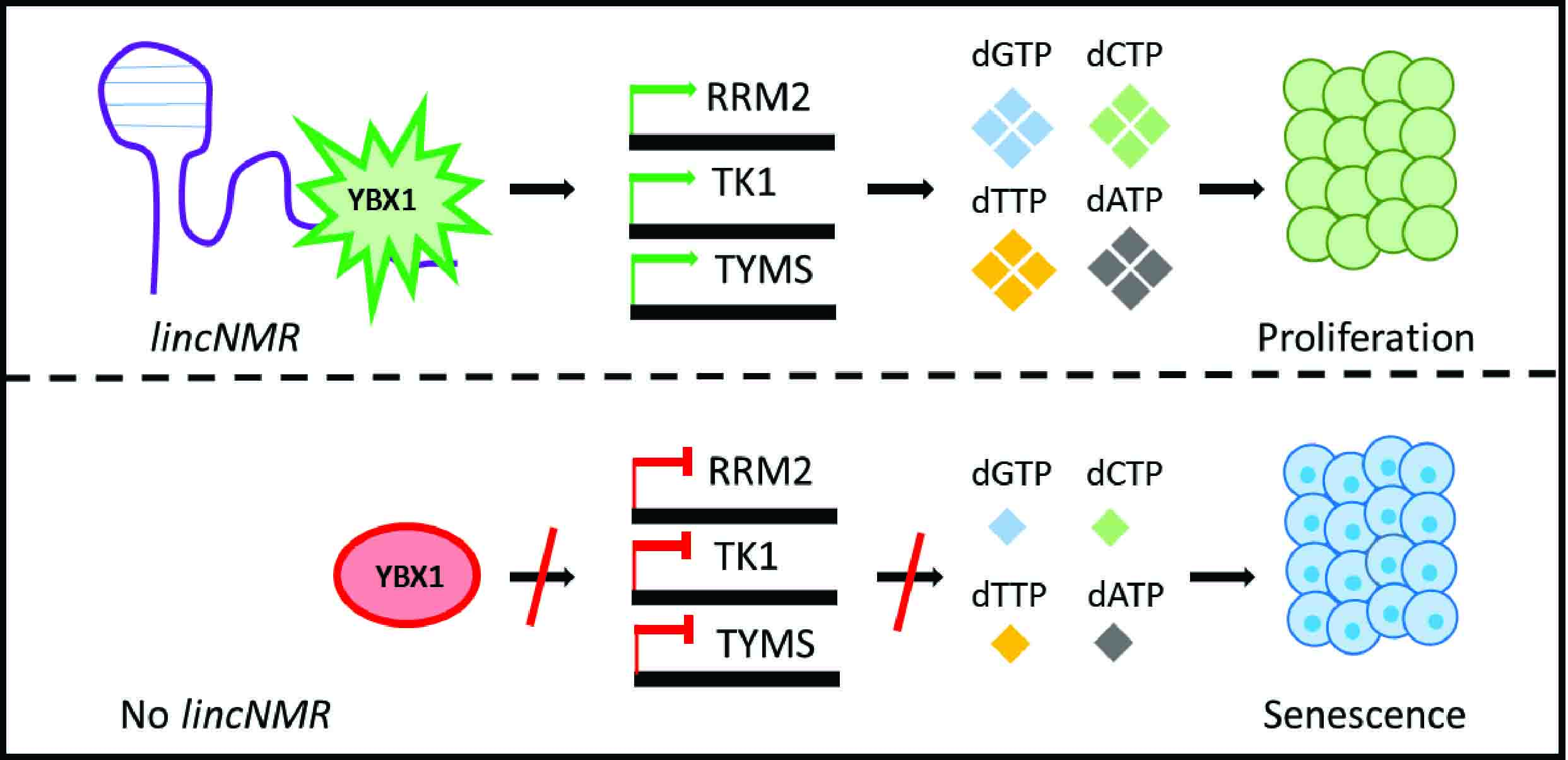Newly discovered RNA as growth driver in liver cancer
It was long assumed that they were useless, but now this appears not to be the case: non-coding RNA (ncRNAs) molecules that do not encode proteins have many different functions, and some are associated with certain diseases. Prof. Dr. Sven Diederichs from the German Consortium for Translational Cancer Research and the German Cancer Research Center in Heidelberg has been conducting research into these molecules at the Freiburg University Medical Centre and discovered a ncRNA that regulates cell proliferation in cancer cells.
They were originally seen as DNA’s little helpers, merely transporting information out of the cell nucleus and serving as blueprints for proteins. It is now known that RNA molecules have many more functions. A total of three-quarters of the human genome is transcribed into RNA copies. However, the body needs only two percent of these to cover all the necessary protein blueprints. A large part of human genetic information therefore contains information for non-coding transcripts rather than protein-coding templates. The group of non-coding RNAs is a very diverse collection. "All RNAs that do not encode proteins and do not have any function in protein synthesis are initially roughly grouped together as ncRNAs," says Prof. Dr. Sven Diederichs. In addition to the Freiburg Medical Centre, Diederichs also carries out research at the German Consortium for Translational Cancer Research (DKTK) and the German Cancer Research Center (DKFZ) in Heidelberg, and is seeking to find a connection between ncRNAs and tumour formation in cancer.
Key players in physiological and regulatory processes
 Prof. Dr. Sven Diederichs is interested in long non-coding RNAs and their role in liver cancer. © Freiburg University Medical Centre/Britt Schilling
Prof. Dr. Sven Diederichs is interested in long non-coding RNAs and their role in liver cancer. © Freiburg University Medical Centre/Britt SchillingRNA snippets of up to 200 nucleotides are called short ncRNAs. These include microRNAs or piRNAs, which are known to play important roles in gene regulation. All of the longer RNA snippets that do not encode proteins are grouped together as long non-coding RNAs (lncRNAs). Their function is still largely unknown; what is clear, however, is that, unlike microRNAs, they are a very heterogeneous group. More than 10,000 lncRNAs have been described in recent years and their number continues to grow. LncRNAs interact with DNA, RNA and proteins as well as a combination of these molecules and appear to complement existing gene regulation mechanisms. It is striking that in many diseases certain lncRNAs are much more common in the cells of affected tissues than in healthy cells. This suggests that they may be involved in the molecular pathogenesis of clinical phenotypes.
Diederichs’ first contact with lncRNAs was during his doctoral thesis on adenocarcinoma of the lung, where he was looking for markers that might be associated with the cancer. He discovered a long transcript without an open reading frame (MALAT1) and his publication was one of the first to associate lncRNAs with cancer. "This was at a time when not much was known about lncRNAs and it was not yet generally accepted that lncRNAs play a functional role," he says. "Today, this group is the subject of intense research." For example, it is now known that many ncRNAs also intervene in cellular processes that affect reproduction, viability and migration ability. They prevent programmed cell death (apoptosis) and promote the formation of new blood vessels, thus acting as drivers of carcinogenesis by regulating one or more characteristics of cancer.
LincNMR helps cancer cells grow rapidly
There are now many ncRNA priority programmes around the world studying various diseases, including cancer. Diederichs and his team are mostly interested in what lncRNAs do in the cell, what proteins cannot do, and especially what factors help liver cancer tumours to grow.
 The long non-coding RNA lincNMR interacts with the transcription factor YBX1, inducing the expression of the enzymes RRM2, TK1 and TYMS that go on to synthesise nucleotides (e.g. dGTP). If the building blocks for the DNA are produced, the cells can multiply (proliferation). If lincNMR is blocked, not enough nucleotides are available and the cells age (senescence) and no longer divide. © nature communications. DOI: 10.1038/s41467-020-17007-9
The long non-coding RNA lincNMR interacts with the transcription factor YBX1, inducing the expression of the enzymes RRM2, TK1 and TYMS that go on to synthesise nucleotides (e.g. dGTP). If the building blocks for the DNA are produced, the cells can multiply (proliferation). If lincNMR is blocked, not enough nucleotides are available and the cells age (senescence) and no longer divide. © nature communications. DOI: 10.1038/s41467-020-17007-9In 200 samples from patients with liver tumours, the researchers specifically looked for lncRNAs that were overrepresented in cancer cells and could have had a possible significance for the tumour. The team found a previously unknown lncRNA that was significantly more common in liver cancer cells, but also in lung and breast cancer tumours, than in healthy tissue. In experiments in cell cultures and on tumours on chorioallantoic membranes (CAM) in incubated chicken eggs, Diederichs' team was able to specifically switch off the molecule in question by means of RNA interference. The result: the cancer cells divided less and grew into smaller tumours. The newly discovered RNA was named lincNMR (long intergenic non-coding RNA-nucleotide metabolism regulator), as it appears that it affected an entire signalling pathway, which helps cells to grow and multiply and also promotes tumour formation. lincNMR is often overrepresented in cancer cells of solid tumours. "The phenotype is not only typical for liver cancer," explains Diederichs. "We were able to show the same effect of upregulation of lincNMR in six tumour entities." Intensive molecular analyses have revealed that lincNMR plays a key role in the assembly of new DNA as the cell is about to divide. If lincNMR is silenced, the nucleotides - as important building blocks - can no longer be produced. "The cell can then no longer divide as usual and it permanently drops out of the cell cycle through cell ageing or cell death," the researcher says.
So lincNMR obviously plays a role in the nucleotide metabolism of the cell, and cancer growth is apparently dependent on there always being enough of the molecule. Only then does the cell quickly produce the number of nucleotides that it needs for DNA synthesis and rapid reproduction.
Therapy approach through lincNMR inhibition?
Diederichs was able to show that lincNMR can be silenced by RNA interference and observed a more rapid ageing of the cells (induction of senescence). The cells did not divide and no longer formed accumulations, as is typical for tumours. The size and weight of tumours in which lincNMR was silenced were significantly reduced. "The key question is whether this is enough to shrink an existing tumour or whether it would just stop it from growing," asks Diederichs, adding that the latter would of course be a clinical benefit.
Liver cancer is the fourth leading cause of death of all cancer-related deaths worldwide. Hepatocellular carcinoma (HCC) accounts for over 75 percent of liver cancers and responds poorly to treatment in advanced stages. LincNMR is six times more common in HCC cells than in healthy liver cells and is believed to be a mechanism that drives carcinogenesis. This might be a starting point for potential therapies. According to Diederichs, the team is still at the very start of investigations that might lead to the development of a potential inhibitor. Many unanswered questions still need to be solved before this can happen. For example, nothing is yet known about potential side effects, or about how the potential blocker could reach the exact target where it is needed. "Killing a cancer cell only makes sense if healthy cells can be spared," says Diederichs. But the fact that lincNMR concentration is significantly higher in cancer cells could already be an advantage. Cancer cells could also react more sensitively in vivo if the RNA is silenced and the cells stop dividing. Nevertheless, the goal is to regress the tumour. "My vision of the future would be a clever combination of drugs: inhibiting lincNMR and combining this with a drug that provokes cell apoptosis, so that the tumour dies," says Diederichs.